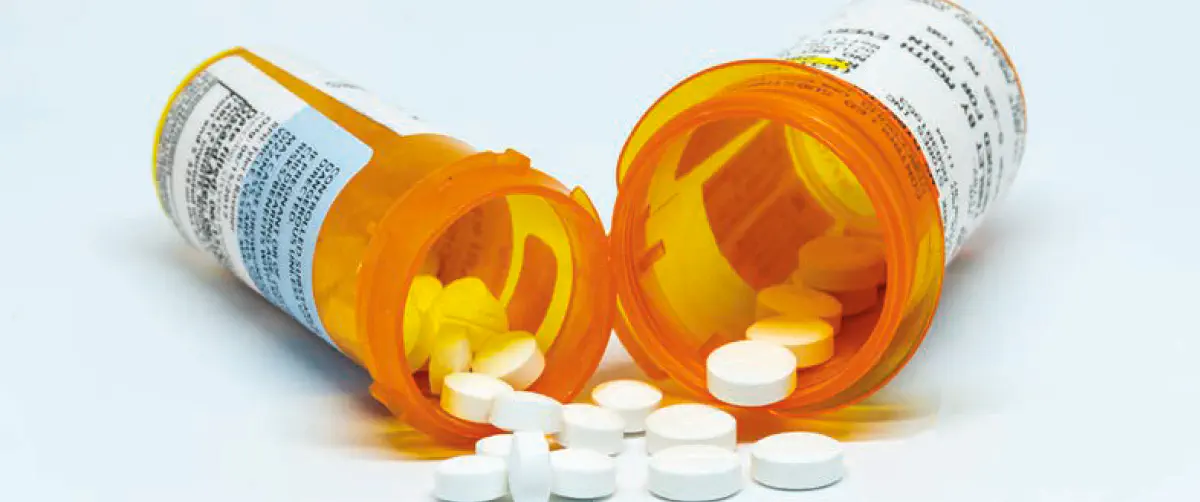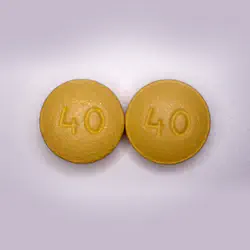DRUGS: WHAT YOU
NEED TO KNOW Booklet

Signs and Symptoms of Oxycodone Addiction

Courtesy of DEA.gov
Oxycodone is a powerful, pain-relieving opioid prescribed by doctors. It is the pain reliever contained in the following well-known medications:
- OxyContin (time-release oxycodone)
- Percodan (oxycodone and aspirin)
- Percocet (oxycodone and acetaminophen)
- Tylox (oxycodone and acetaminophen)
- Roxicet (oxycodone and acetaminophen)
- Roxicodone (oxycodone)
- Endocet (oxycodone and acetaminophen)
Oxycodone is a controlled substance because of its high potential for abuse and its ability to cause addiction.

Courtesy of DEA.gov
In the form of OxyContin, this pain reliever rose to international prominence, but not because of its usefulness in relieving pain. But rather because of the fraudulent marketing engaged in by the drug’s manufacturer, Purdue Pharma. As revealed in testimony before Congress, the false claims made by Purdue’s executives and staff encouraged doctors to prescribe this drug freely, for any kind of long-term pain. It took years for it to become widely known that long-term use of an opioid as powerful as oxycodone and in the high dosages encouraged by Purdue personnel created addiction. The lives of many millions of people were damaged or ruined by this tragic chapter in the drug’s history.1
According to the Substance Abuse and Mental Health Services Administration, 3.2 million people abused this drug in 2020. Only hydrocodone was abused more often.2
Aside from this terrible episode, oxycodone has valid use as a pain reliever for cancer pain, post-surgical pain or end-of-life pain.
Physical Signs of Oxycodone Addiction
Opioid abuse and addiction cause certain distinctive signs, like those listed below. The class of opioids includes opium, morphine, codeine, oxycodone, hydrocodone and fentanyl.
- Sedation
- Confusion
- Slow movement
- Euphoria
- Nausea
- Stomach pain
- Headache
- Vomiting
- Itching
- Dizziness
- Lightheadedness
- Tiny pupils
A person looking for these signs in someone they think might be misusing opioids should be aware that because of polydrug use (use of more than one drug in succession or at the same time), all these signs may not be visible. A person could combine opioid use with stimulant use, for example. Cocaine used after an opioid would make the person more alert, masking some of these signs.
Behavioral and Emotional Signs of Oxycodone Addiction
These behavioral, mental and emotional signs could reveal that a person is misusing this drug.3
- Decreased sexual desire or ability to function
- Mood changes
- Agitation
- Hallucinations
The Long-Term Physical Damage of Oxycodone Addiction
Oxycodone affects the function of every organ in the body, slowing or shutting down some functions. Slowed gastrointestinal function can result in constipation, bowel obstruction and internal bleeding. An opioid user is more likely to suffer sleep apnea and depressed function of the lungs which can predispose them to pneumonia.4
Some studies show an increased risk of cardiovascular problems among those on long-term opioid therapy or who misused the drug over a long period of time. There is also an increased risk of bone fractures. Infertility and hormone disruption are also effects of long-term exposure to opioids.
The Long-Term Emotional and Mental Damage of Oxycodone Addiction

Lengthy opioid use has been linked to depression and anxiety. The incidence of suicide is also higher among those addicted to opioids.5 One report estimated that 30% of opioid overdose deaths could have actually been suicides.6
Oxycodone Overdose
A person who misuses this drug will take more than a doctor recommends, take it more frequently or without a prescription, or consume it in an unapproved manner. For example, they could crush a pill and snort it, dissolve the pill and inject it, or smoke it.
By this improper use, they could suffer an overdose. The following signs reveal an overdose of oxycodone:
- Slow, labored breathing
- Lack of breathing
- Lack of responsiveness
- Cold, clammy skin
- Blue lips or fingertips
- Excessive drowsiness
- Muscle weakness
- Coma
Emergency medical care is needed immediately to prevent this person’s death. The opioid antidote naloxone can bring this person back from the brink of death. Additional medical support is needed after this initial response. That’s because the effects of naloxone could wear off before the stupefying effects of oxycodone. The person could go back into an overdose after a period of time passes if they have no medical supervision.
Withdrawal from Oxycodone
Withdrawal symptoms can occur when a person has been abusing this drug or when they have taken it over a lengthy period, exactly as prescribed. It can take only a couple of weeks of use for enough dependence to develop that withdrawal will be experienced. If a person is misusing the drug by taking it more frequently than it would be prescribed or by taking higher doses, it might not even take that long to become dependent on this drug.7
Early in withdrawal, the symptoms are mild: Watery eyes, runny nose, sweating, yawning.

A few days into withdrawal from oxycodone, a person is normally pretty miserable and sick with these symptoms:
- Nausea
- Vomiting
- Diarrhea
- Lack of appetite
- Cravings for more drugs
- Depression
- Fast heart rate
- Chills
- Tremors
- Restless legs
Recovery from Opioid Addiction
Even if a person has been addicted to opioids for years, it is possible to change one’s path toward a bright future. The family of an addicted person can support them by finding a good rehabilitation program that has excellent medical supervision during the withdrawal phase.
But an initial detox is not enough. When a person has been addicted to a substance, they have started to rely on it to deal with mental or emotional needs. This person will need help while they build new life skills for dealing with issues in life. That’s when a person can truly break free from the grip of opioids and start a new, sober, chapter in their life.
Sources:
-
U.S. Government Publishing Office. “THE ROLE OF PURDUE PHARMA AND THE SACKLER FAMILY IN THE OPIOID EPIDEMIC.” U.S. GPO, 2020. U.S. GPO Article ↩︎
-
SAMHSA. “Key Substance Use and Mental Health Indicators in the United States: Results from the 2020 National Survey on Drug Use and Health.” Substance Abuse and Mental Health, 2021. SAMHSA Publication ↩︎
-
MedlinePlus. “Oxycodone.” MedlinePlus, 2021. MedlinePlus Article ↩︎
-
NIH. “A Review of Potential Adverse Effects of Long-Term Opioid Therapy: A Practitioner’s Guide.” NIH, 2012. NIH Article ↩︎
-
NIH. “Medical and Psychological Risks and Consequences of Long-Term Opioid Therapy in Women.” NIH, 2012. NIH Article ↩︎
-
NIH. “Suicide Deaths Are a Major Component of the Opioid Crisis that Must Be Addressed.” NIH, 2019. NIH Article ↩︎
-
National Institutes of Health. “Alleviating Symptoms of Withdrawal from an Opioid.” NIH, 2012. NIH Article ↩︎


